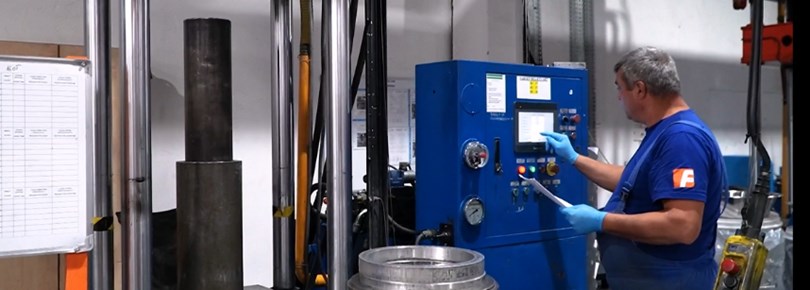What is Compression Moulding?
February 2021

Compression moulding was first developed to manufacture composite parts as a replacement for metal, typically used for larger flat or moderately curved parts.
The advantage of compression moulding is it's one of the lowest cost moulding methods in comparison to injection moulding or transfer moulding, and with relatively little waste, it makes compression moulding a good choice when working with expensive compounds. However, injection moulding is often faster than compression moulding so can be more cost-effective if you need to produce a large number of parts. As a general guide, high volume production is better suited to injection moulding, whereas low to medium volume production is better suited to compression moulding.
Compression moulding and injection moulding are very similar, in compression moulding, the moulds are closed around the material and in injection moulding, the material is injected into a closed mould cavity. Injection moulding is generally a better option for more complex parts and compression moulding lends itself more to simple, or large basic shapes that can’t be produced by extrusion techniques.
In compression moulding, the moulding material is placed in an open, heated mould cavity. The material is then heated above the melting point, formed, and then cooled before the part is removed. The more evenly the material is distributed over the mould surface, the less flow orientation occurs during the compression stage.
Compression moulding can be used for the production of high-performance thermoplastic components, along with stock shapes such as rod or tube suitable for modern-day machining centres.
Both PTFE and melt fluoropolymers like PEEK are compatible with compression moulding, although PTFE billets are produced using a cold moulding process.
Other common materials used in compression moulding include:
- PAI
- PPS
- HDPE
Compression moulding produces parts with high structural stability, that are free of flow and knit lines. Corrosion resistant durable parts can easily be produced through this method.
Compression moulding presses range from large industrial machines using hydraulic lift systems to benchtop presses along with cold moulding machines. With over 1500 moulding tools available we can offer PTFE moulded rods from 1mm-1500 Ø at various lengths and hot moulded rods up to 200mm Ø and tubes up to 940mm Ø (O.D).
At Fluorocarbon we offer full traceability on all materials along with in-house tensile strength and elongation testing. Our materials are conditioned and stress relieved to ensure optimum quality for machining. Combining this with finished component design and machining facilities we provide the advantage of offering a cost-effective end-to-end service.
We also offer a bond to board service, for machining at your premises should it be required.
To find out how we can help your latest project contact info@fluorocarbon.co.uk










